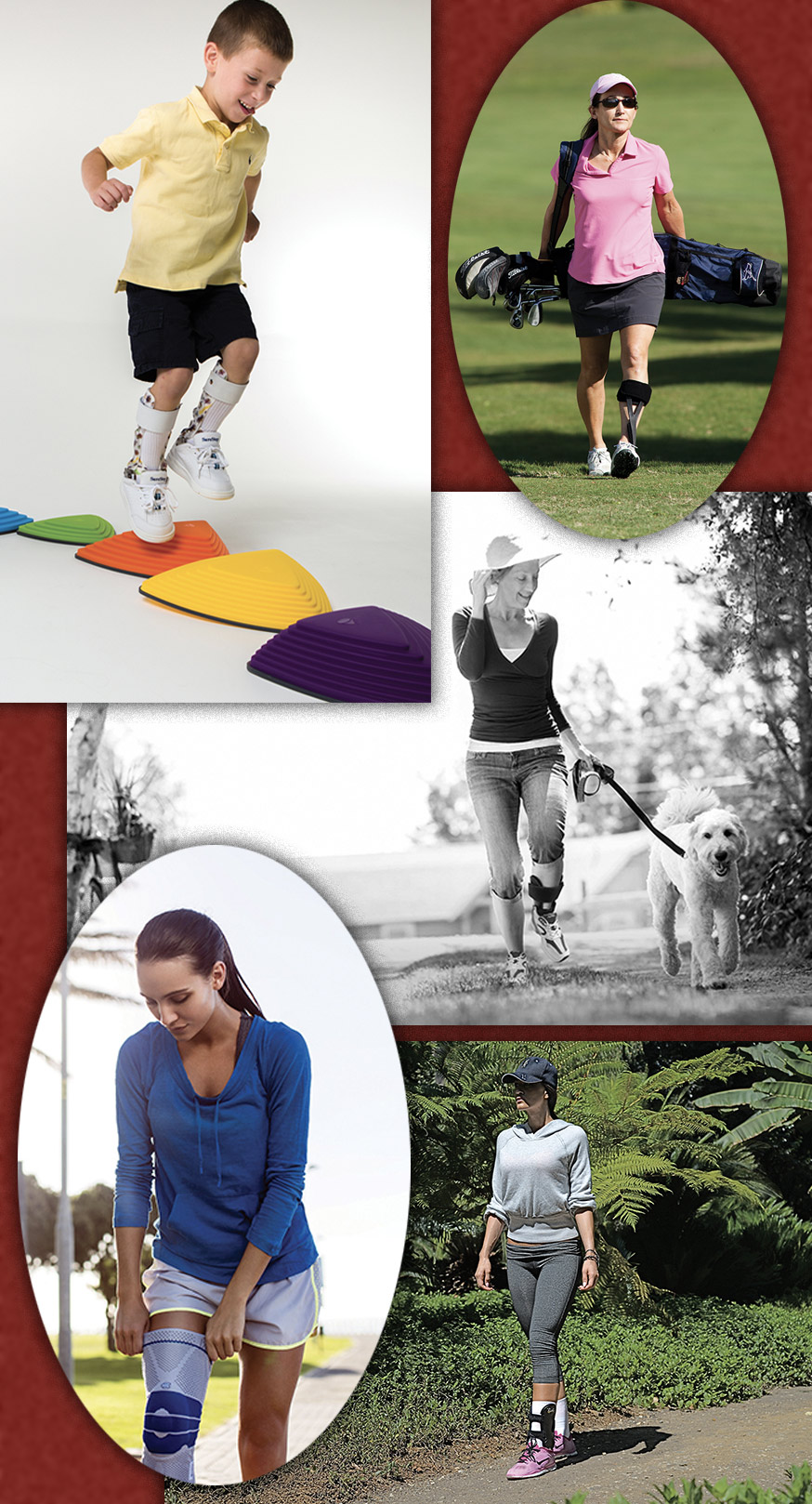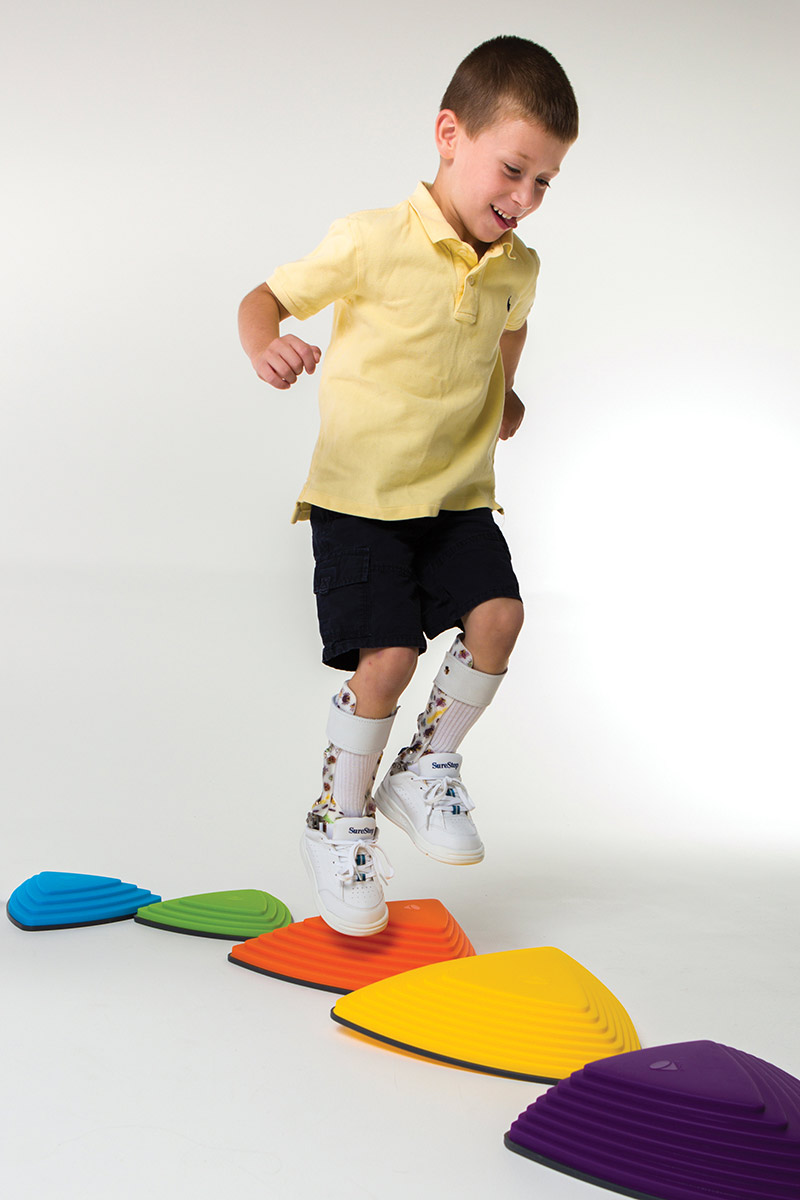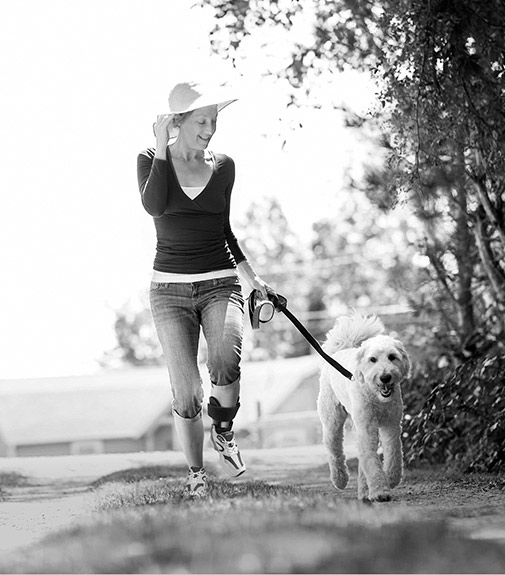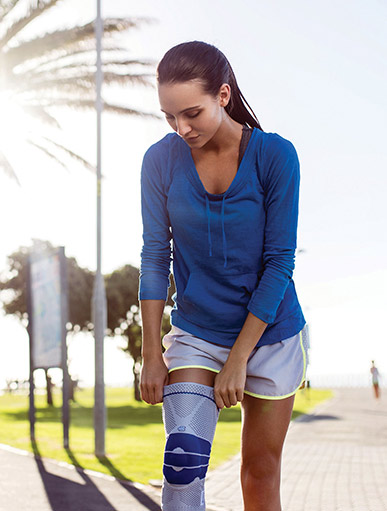 The care and prevention of skin issues may not get as much attention in orthotics as in prosthetics, but such issues can significantly affect patient outcomes. Here, lower extremity experts share the tips and tricks they use to manage dermatological challenges related to orthotic devices.
The care and prevention of skin issues may not get as much attention in orthotics as in prosthetics, but such issues can significantly affect patient outcomes. Here, lower extremity experts share the tips and tricks they use to manage dermatological challenges related to orthotic devices.
By Lori Roniger
Modern orthotic devices are designed to fit more intimately than in the past, a development that allows for more effective biomechanical correction. But this evolution has also led to an increase in the incidence of lower extremity skin issues related to structural or environmental stresses.
Other trends, such as a greater number of people living with type 2 diabetes, diabetes-related peripheral neuropathy, and stroke, have increased the population of patients using ankle foot orthoses (AFOs) and other lower extremity orthotic devices who are susceptible to skin breakdown and other issues. And those with spinal cord injuries and decreased sensation in their lower extremities can present skin-related challenges for practitioners.
“You really didn’t have too many skin-related issues in the past,” said Harry “JR” Brandt Jr, CO, LO, BOCO, director at Collier Orthotics and Prosthetics in Pleasant Hill, CA, of older-style devices.
Brandt, who has worked as an orthotist for 35 years, pointed out that socks and silicone liners are often discussed in prosthetics and in relation to protecting the existing limb, but there’s less of that type of discussion with regard to orthotic devices. He noted, however, that practitioners are increasingly utilizing thermoplastic orthotic devices with more contact points, which can provide greater control but also lead to more skin issues.
“It’s important to manage that tissue correctly to reduce or eliminate the forces involved,” he said.
Josh Ahlstrom, CPO, an orthotist and prosthetist with Midwest Orthotics and Technology who is based in Indianapolis, IN, focuses on the pediatric population and encounters skin issues in some of his patients.
“One of the problems that leads to skin irritation is trying to take a mobile object and put it in something that doesn’t let it move,” Ahlstrom said.
The goal, he said, is to equalize pressure distribution all around the foot and to put patients in a brace that moves when the foot moves. An AFO-SMO (supramalleolar orthosis) combination is a total contact brace that allows the foot to have natural movement, he said.
Skin issues that practitioners see and seek to prevent in patients who use lower extremity orthotic devices include pressure and diabetic ulcers, blisters, calluses, fungal infections, and problems related to perspiration and edema. At the very least, these issues can negatively impact patient’s quality of life and compliance with device wear; at worst, they can significantly increase the risk of amputation.
Sock watch
One of the key ways clinicians help patients protect their skin is by recommending they wear appropriate socks. While there’s some variety in the type of socks and sock material that practitioners prefer and recommend, they all strive to help keep patients’ skin dry.
“You can have the best-fitting AFO that you’ve ever seen, and if you get them in a thin nylon sock [or any sock that doesn’t provide effective perspiration wicking] and an ill-fitting shoe, it basically negates what you’ve just accomplished through this wonderful fitting, and you end up back in the office with pressure sores around the toes,” Brandt said.
He recommends athletic socks that contain padding and are made of acrylic fibers and yarns, polyesters, nylon, and wool. Brandt said these socks help to wick away perspiration and keep skin dry and less susceptible to shear forces. He usually recommends a boot sock or uniform sock with some compression.
He also tells patients lacking sensation to wear white socks so that if a sore starts to blister it will show on the sock.
David Misener, CPO, who practices at Clinical Prosthetics and Orthotics in Albany, NY, said that, even in patients with normal skin integrity, perspiration is a significant issue that can affect the skin where the orthotic device makes contact. This can affect all types of patients and present problems during any season of the year where he practices. Although complaints about perspiration can come from almost any patient, he said, they can be much more of a problem with total contact designs that don’t allow air to circulate or moisture to evaporate.
Misener suggests patients wear wicking clothing, socks that contain wool blends, or good quality athletic socks.
“I find more often than not that the patients have a particular preference,” he said.
Ahlstrom, who noted that his pediatric population can experience skin irritation, blisters, increased reddening, and calluses with lower extremity orthotic devices, recommends that socks fit appropriately and don’t have wrinkles or creases that can create pressure points on the skin. Although there are some great AFO socks, he said, those can be relatively expensive, and a well-fitted cotton athletic sock can do the trick in most cases.
Ahlstrom also advises his young patients, some of whom have “particularly sweaty little feet,” to change socks during the day around lunchtime.
“Changing socks throughout the day can do wonders for reducing blisters,” he said.
Sean McKale, CO, an orthotist with Midwest Orthotics in Chicago, doesn’t get fancy with his sock recommendations, telling patients to go for cotton versus acrylic socks.
“They wear what they want to wear,” McKale said. “Some patients wear taller socks and some ankle socks. There doesn’t seem to be too much of a problem.”
Jason Jennings, CPO, area clinic manager with Hanger Clinic in Houston, also recommends cotton socks, as well as changing them at least every eight hours year-round, in part because of the Texas heat.
Likewise, the sock recommendations of Chris Toelle, LCO, regional area clinic manager for Hanger in Sarasota, FL, are influenced by the warm, humid climate there. He said thick nylon and wool socks for AFOs are “intolerable” there, but socks made of cooling materials, blends, and military-inspired materials are good choices. He said a traditional sock can be very hot under a lower extremity orthotic device and cause skin to break down and look like it has just emerged from a pool.
For feet that are slipping or uncomfortable in orthotic devices, Tracey Vlahovic, DPM, an associate professor at Temple University School of Podiatric Medicine in Philadelphia who focuses on skin issues, recommends socks containing copper or silver fibers.1,2
“It won’t cure sweaty feet, but it can certainly make them more comfortable,” Vlahovic said. The embedded fibers can also be deodorizing or antimicrobial, which can help with athlete’s foot.
Dry ideas
Although choosing the right socks to wear under lower extremity orthotic devices and changing them frequently can help reduce perspiration problems, some practitioners, like Vlahovic, also recommend other strategies for keeping their patients dry.
Sweaty feet are probably “the biggest thing” she sees related to orthotic devices, she said.
She noted that leather orthotic topcovers can increase sweating in some patients or make it feel like the foot is slipping, so using a different topcover material can be helpful.
If the underlying cause of sweaty feet is hyperhidrosis, however, the use of topical aluminum chloride solution (Drysol) under a physician’s direction can be effective at reducing sweating, she said. If that doesn’t control the problem, Botox injections are another reasonable treatment.3
Jennings, working in Texas, recommends simply applying commercial antiperspirant directly on lower extremity skin.
To reduce friction caused by sweaty feet and wet socks, Ahlstrom likes to apply thin, adhesive, low-friction interface material manufactured with polytetrafluoroethylene (PTFE) film directly to the inside of a brace. It can be cut into any shape and can reduce shear forces and prevent tackiness even if a sock is wet, he said.
McKale said that, for some of his patients who wear a molded inner boot that controls side-to-side motion and experience greater sweat accumulation, he modifies their boots by adding small air holes, each the size of a belt buckle hole, using a hand punch tool.
Jennings noted that fungal infections, like athlete’s foot, can occur anywhere on the body, including the ankles and thighs, but are sometimes mistaken for a rash. If an over-the-counter antifungal medication doesn’t help, patients should be referred to a physician.
Put a shoe on it
Although it’s important for socks and lower extremity orthotic devices to work well together in order to protect skin, Brandt emphasized the importance of helping patients select appropriate footwear when initially evaluating them, so that all components work together as a unit.
“A large percentage of patients wear shoes that are too big or small or ill-fitting,” Brandt said.
When fitting the orthotic device, he’ll sometimes recommend shoes that are a half-size bigger or a different type of shoe, such as styles with a deeper toe box or athletic shoes that come in a range of widths that can accommodate extra volume.
Pros and cons of contact
Practitioners also noted the type of lower extremity orthotic device used and proper fitting are also key for avoiding skin issues.
McKale, who tends to fit patients with carbon-fiber AFOs that have an open design, says this style is less problematic for the skin than total contact polypropylene AFOs that have less air flow.
“I don’t deal with a lot of skin issues,” McKale said. “The advantage of a carbon-fiber system is less total contact.”
He noted some AFOs come with removable liners that can be washed, which may help avoid skin issues.
A total contact AFO, however, can be a good choice for some patients. If, for example, a posterior-leaf type design creates skin issues at high-pressure areas, the total contact design can help distribute that pressure, Brandt said.
Modifications
Brandt noted that certain modifications to improve the fit of an orthotic device can be helpful for preventing skin issues. He recommends paying special attention to bony prominences, taking time to identify those areas appropriately when casting, and wrapping them with elastic bandages to accentuate them and compress the soft tissue evenly.
“The challenge of course goes up exponentially if there are skin or [muscle] tone or vascular issues,” Misener said.
Pressure issues, sores, and abrasions can occur when there is too much pressure over a specific area, he said.
“Our goal is to reduce the peak pressures at that point,” Misener said.
Design changes or dynamic stopping can help realign the anatomy in ways that minimize the risk of skin issues, he said. For example, stroke patients who develop pressure sores when using a brace dynamically can benefit from a structure created within the device to address pronation or supination.
Toelle, who sees a large population of young and old patients with diabetes in southwest Florida, said he prefers to fit lower extremity orthotic devices for people with diabetes in the afternoon, when they’re at their worst in terms of edema. If the device ends up a little too big at times when the edema is less severe, padding or socks can help. A removable diabetic insert can help adjust pressure to the bottom of the foot over time while using the same brace.
Toelle said he sees a lot of skin issues related to AFO use in patients with drop foot from multiple diagnoses, such as stroke, diabetes, or cardiac or blood flow issues. He also uses a lot of stance-control devices and knee ankle foot orthoses (KAFOs) in stroke patients with weaknesses in the extremities; because these devices cover a larger area of the leg, they are even more likely to be associated with skin issues than lower-profile devices.
Working with children, Ahlstrom uses a lot of very flexible plastic. He said this can wrap around the foot to create total contact and even pressure distribution and help avoid common hot spots. Overpronation in children can produce redness at the navicular, medial malleolus, the lateral portion of the calcaneus, and the fifth metatarsal head.
Change is good
Sometimes patients require a change in device; for example, a teenaged patient with spina bifida who came to Brandt after an old solid-ankle AFO had created a large pressure wound. To address the pressure issue, he fit the patient with a total contact two-piece AFO that distributed pressure over a larger area. To provide an intimate fit, a cast was custom-made for the patient. He noted the patient was at a key developmental point at which the orthotic solutions that had worked in the past might not work in the future.
Patients with an existing wound typically need to transition to a CROW (Charcot restraint orthotic walker) boot or another type of walker until the wound heals. In particular, diabetic ulcers and pressure ulcers should be offloaded immediately, which can be done by creating room in the orthosis or padding around the area, Jennings said.
Ahlstrom recalled a child with cerebral palsy who had been getting bigger, heavier, and more difficult to manage in terms of tone and pronation. He wore a traditional AFO of rigid plastic but was developing a significant callus over the navicular bone. He was then switched to an SMO, fit into the AFO, to address the callus issue with a more forgiving material without sacrificing stability.
“A lot of times skin irritation is a result of trying to get the body to do something that it maybe doesn’t want to do,” Ahlstrom said. “The goal in orthotics is to try to put the body in better alignment so it can function the way it’s designed to function. It’s good to move forward with techniques and materials that work with the body and not against it.”
Lori Roniger is a freelance writer based in San Francisco, CA.
- Morones JR, Elechiquerra JL, Camacho A, et al. The bactericidal effect of silver nanoparticles. Nanotechnology 2005;16(10):2346-2353.
- Borkow G, Gabbay J. Putting copper into action: Copper-impregnated products with potent biocidal activities. FASEB J 2004;18(14):1728-1730.
- Walling HW, Swick BL. Treatment options for hyperhidrosis. Am J Clin Dermatol 2011;12(5):285-295.














Had an external fixator applied after ankle surgery to fix extreme pronation & hammertoes. Am finally weaning out of cam- boot; custom orthotics should be ready in 2 weeks. Noticed a pressure sore in achilles heel area Friday night. Recommendations please?
My husband is getting a new brace that will go above the knee to stop hyper-extension and will go down under his foot for foot drop. His current brace (has had the same type for 40 years) starts below the knee and articulates at the ankle for foot drop. I have been using over the calf athletics socks that have worked well; but what do I use for the new brace that will go above the knee and articulate at the knee and then continue down, articulate at the ankle and go under his foot. I know I can still use a tube sock for his leg, but what can I use for the knee and above. I thought of a knee compression sleeve (like copper fit) but they don’t come in sizes large enough. Please let me know of anything that will stay up and still be comfortable for him to wear (light weight). Thank you.